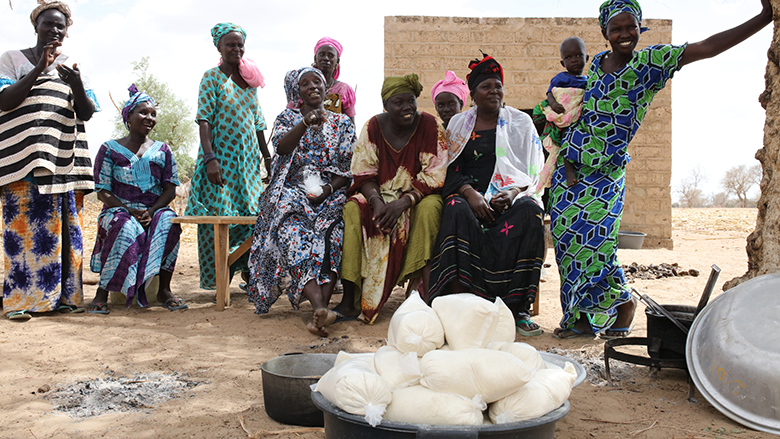Chickens, prenatal care and cereal banks
Using a community-based service delivery model, the nutrition program in Senegal was also able to adapt to very local contexts and each community’s specific needs. For example — in Balol Elimanne, a 400-person farming village that was hit hard by a 2013 locust invasion — the program provided conditional cash transfers and chickens to help particularly vulnerable families.
Cheikh Diop, a farmer, and his wife, Arame Diaw, head one of these vulnerable households. After a locust invasion destroyed their crops in just two hours, they struggled to feed their children. “Suddenly, the sky turned red and we heard a loud humming sound. By the time we all ran to our fields, the locusts had eaten everything,” Cheikh said. As part of the program’s holistic approach, the Diop family received chickens through the agriculture department. The chickens provided the family with a much-needed additional food source and extra income.
Around that same time, Arame was pregnant, and the program also provided cash incentives for antenatal visits and for delivering her baby in the hospital. The money she received allowed the couple to buy additional food for the family, medicine, and school supplies. “My prayer for each of my children is that they get good degrees and can take care of us in old age,” Arame said.
In Ouadiour Serrer, a steering committee manages a cereal bank that provides fortified porridge to mothers whose children have been identified as malnourished. (Photo credit: Dominic Chavez)
In nearby Ouadiour Serrer, a steering committee manages a local cereal bank. Each year after the harvest, community members provide the committee with bags of millet, groundnuts, and black-eyed peas. From those rations, the bank committee prepares the grain to create packages of the nutrition-boosting fortified porridge, which is then distributed to local mothers whose children are identified as malnourished during weighing sessions.
Ndeye Fatou Dia, a member of the cereal bank committee and community relay worker, described taking care of the community’s children as “noble work.”
“I have seen a lot of changes . . . the children who went to the weighing session are far smarter than those that didn’t go,” Ndeye said. “My wish is to see some of these children become government ministers . . . or even become president.”


